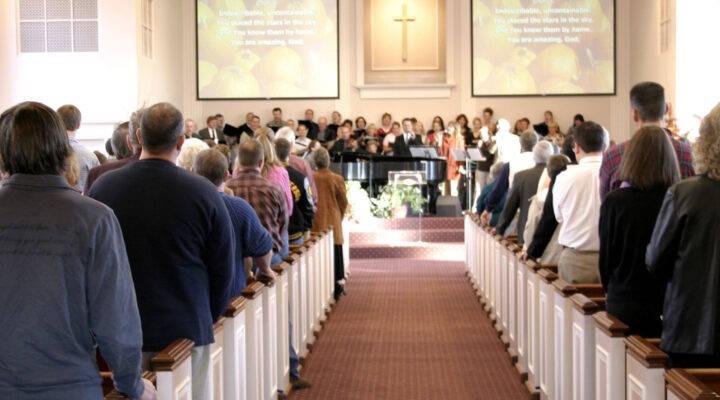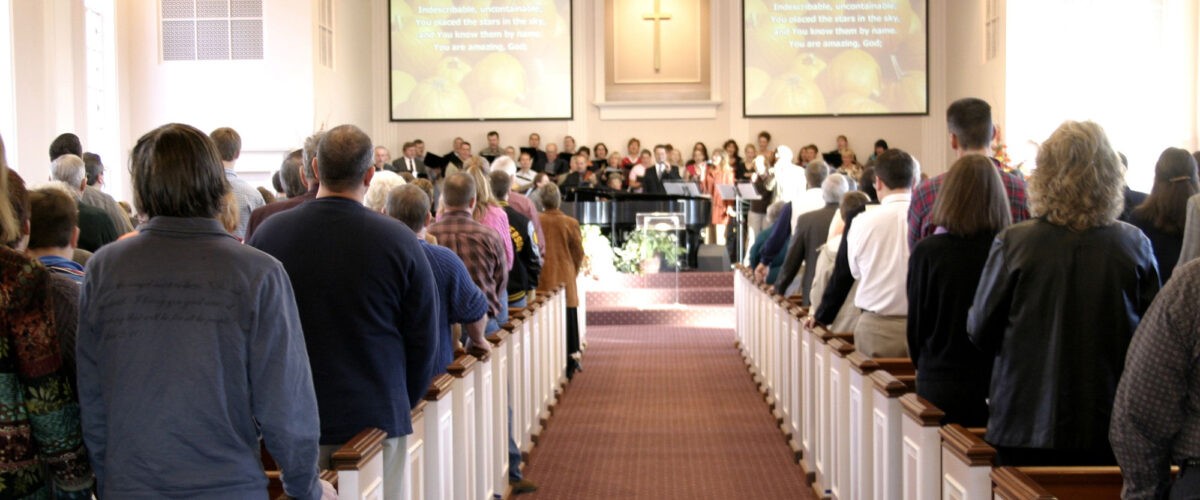The post-COVID return to church has plateaued, according to new nationwide data from Pew Research.
After most houses of worship closed to in-person gatherings in mid-March 2020 due to the initial threat of coronavirus, there has been a slow return to some sense of “normal” since the widespread availability of vaccines. Yet while only 5% of U.S. congregations remain closed or online-only due to the pandemic, overall church attendance has not returned to pre-pandemic levels.
“Attendance at in-person services — which grew steadily from July 2020 through September 2021 — has plateaued, as has the share of adults watching religious services online or on TV,” the latest Pew report explains.
Prior to the pandemic, in data drawn from July 2019, Pew found about 45% of Americans said they attended religious services once a month or more. By July 2020, the number of Americans who reported attending worship services in-person during the prior month had dropped to 13%.
 By March 2021, in-person attendance started growing again, first to 17%, then to 26% in September 2021, and now to 27%.
By March 2021, in-person attendance started growing again, first to 17%, then to 26% in September 2021, and now to 27%.
The inability to attend in person created a huge spike in online church attendance, and that option continues to thrive in many places more than it did prior to the pandemic. But even online worship participation now appears to have hit a plateau.
While in-person attendance has been growing, online worship participation has been declining — but is far from gone. The percentage of Americans who said they have streamed religious services online or watched them on TV in the past month declined from 36% in July 2020 to 28% in September 2021 and now stands at 30%.
What many churches now seek to measure is the combined count of in-person and online worshipers. Gaining trend lines on this measure is difficult, however, because most polling organizations did not measure online church attendance prior to the pandemic.
To piece this together for a current snapshot, Pew reports: “About a third of U.S. adults (32%) in the new March survey say they typically go to religious services at least once or twice a month. Of these self-described regular attenders, two-thirds (67%) report that they actually have attended physically (in person) in the last month, while 57% say they have watched services online or on TV during that period.”
In other data from the latest survey, Pew reported:
- Among U.S. adults who say they attend religious services, 43% now report that their house of worship is currently open and holding services the same way it did before the COVID-19 outbreak — up 14 percentage points in the last six months and 31 points since last March.
- Among U.S. adults who say they attend religious services, 47% say their congregation is open but with modifications still in place due to the pandemic, such as mask requirements or social distancing.
- Among all adults who say they typically attend services at least monthly, 36% have both attended in person and watched services digitally in the last month, while 31% say they only have attended in person and 21% say they recently watched religious services online or on TV but have not attended in person.
- 12% of self-described regular attenders report that they have neither gone in person nor watched services virtually in the last month.
- Protestant churchgoers in the historically Black tradition stand out for being the Christian group most likely to have only watched religious services online or on TV in the last month, with about a third (35%) describing their behavior this way.
- Mainline Protestant churchgoers stand out for rising rates of in-person attendance, with the share saying they have attended a service in the last month increasing by 12 points since September 2021 (from 56% to 68%).
Related articles:
Younger and older Americans aren’t returning to church as much as the middle-aged
Most comprehensive study yet of COVID’s impact on churches finds uneven results
Largest-ever U.S. congregational survey confirms what church consultants have been telling you


